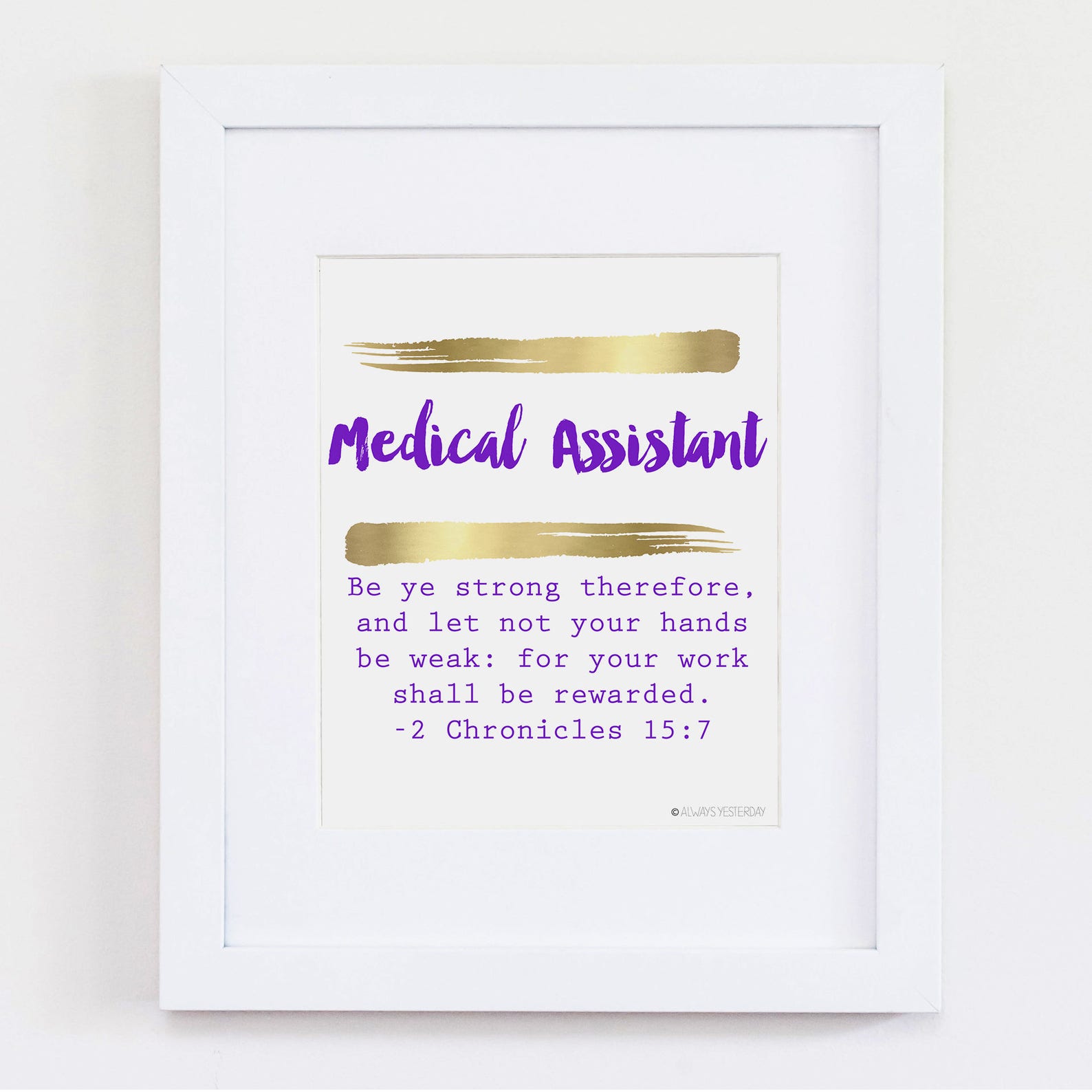
Allow mature, sensitive, and effective relationships with patients and fellow workers (interpersonal skills).

Establish rapport with patients, families, and colleagues.Interpersonal abilities sufficient to interact with individuals, families, and groups from a variety of social, emotional, cultural, and intellectual backgrounds. Interpersonal Behavioral and Social Skills Utilize logical thought processes to make decisions.Initiate proper emergency care protocols, including CPR, based on assessment data.Assess patient's condition and needs based on medical assisting knowledge and education.Demonstrate critical thinking/cognitive skills necessary for problem solving and effective performance of medical assisting functions.Ability to synthesize verbal and written patient and healthcare information.Recognize cause-effect relationships in clinical situations.Be able to stand and walk for 4-8 hours per clinical session.Ĭritical thinking ability sufficient for safe clinical judgment.Execute the small muscle hand and finger movements required to safely perform medical assisting services.Physically be able to administer emergency care including performing CPR.Accurately draw up medications without contaminating the syringe or needle.Gross and fine motor abilities sufficient to provide safe effective patient care. Ability to stoop, bend, twist, reach and occasionally kneel and squat.Push a wheelchair without injury to self, patient, or others.Be able to move around in patient treatment area.Be able to push, pull, and lift 50 lbs.Assist each patient in accordance with their individual needs and abilities to safely ambulate, move, turn, and transfer.Physical abilities sufficient to move from room to room, assist physician, and maneuver in small spaces. Document own actions and patient responses as indicated.Read the patient's medical history and/or medical consult.Legibly document following ethical and legal guidelines.Be able to obtain information, explain treatment procedures, initiate patient education, and describe patient situations.Effectively communicate to the patient in order to converse, instruct the patient, relieve anxiety, gain their cooperation during procedures, and understand the patient when they are communicating symptoms of a medical emergency.Students may be required to use protective clothing or gear such as masks, goggles, gloves, and lead aprons.Ĭommunication abilities sufficient for interaction with others in verbal and written form. Be able to tolerate risks or discomforts in the clinical setting that require special safety precautions, additional safety education, health risk monitoring, working with sharps, chemicals, and infectious disease.Physical health sufficient enough to be able to tolerate certain conditions present in the clinical setting.

Adapt effectively to stressful environments and situations.Be able to respond to patients' changing physical conditions.Be able to visually concentrate and focus attention, thoughts, and efforts on patients and equipment for varying periods of time.Mental ability sufficient for patient assessment and treatment and operation of equipment and care of patients. Intact fine motor movements of the hands to perform palpation of various pulses, assist with patient positioning, and safe patient transfers.Able to perform the required techniques using various pieces of medical equipment, instruments, computers, telephones, and other office equipment to accomplish operational functions related to medical assisting services.Tactile ability sufficient for patient assessment and treatment and operation of equipment. Ability to hear equipment monitors such as a thermometer beep and autoclave timer.Ability to listen to breath and heart sounds while assessing vital signs including BP, pulse, and respiration rate.Hear and verbally respond to patient questions and directions from instructors, students, and staff, in person and/or over the phone.Ability to read forms and to examine diagnostic and/or lab results.Īuditory abilities sufficient to monitor and assess patient needs, and to provide a safe environment.Accurately document in the medical record.Able to perform instrumentation using hand-to eye-coordination.Be able to assist with medical procedures and to read gauges and instruments such as thermometers, blood pressure gauge, and syringes.Ability to accurately measure and properly administer medications.Ability to observe patients in order to assess their condition and/or needs.

Visual ability for observation and assessment necessary in the operation of equipment and care of patients.


 0 kommentar(er)
0 kommentar(er)
